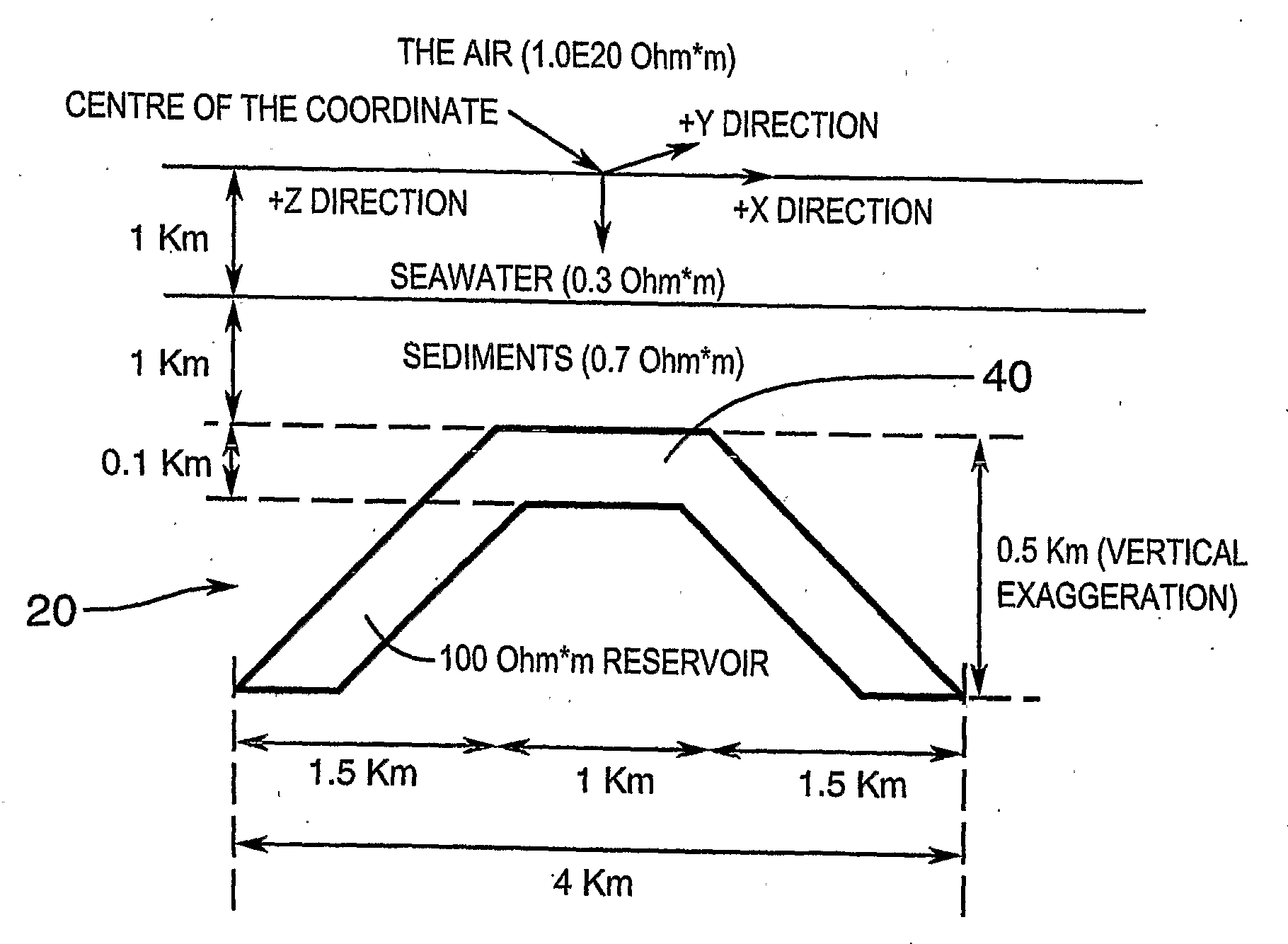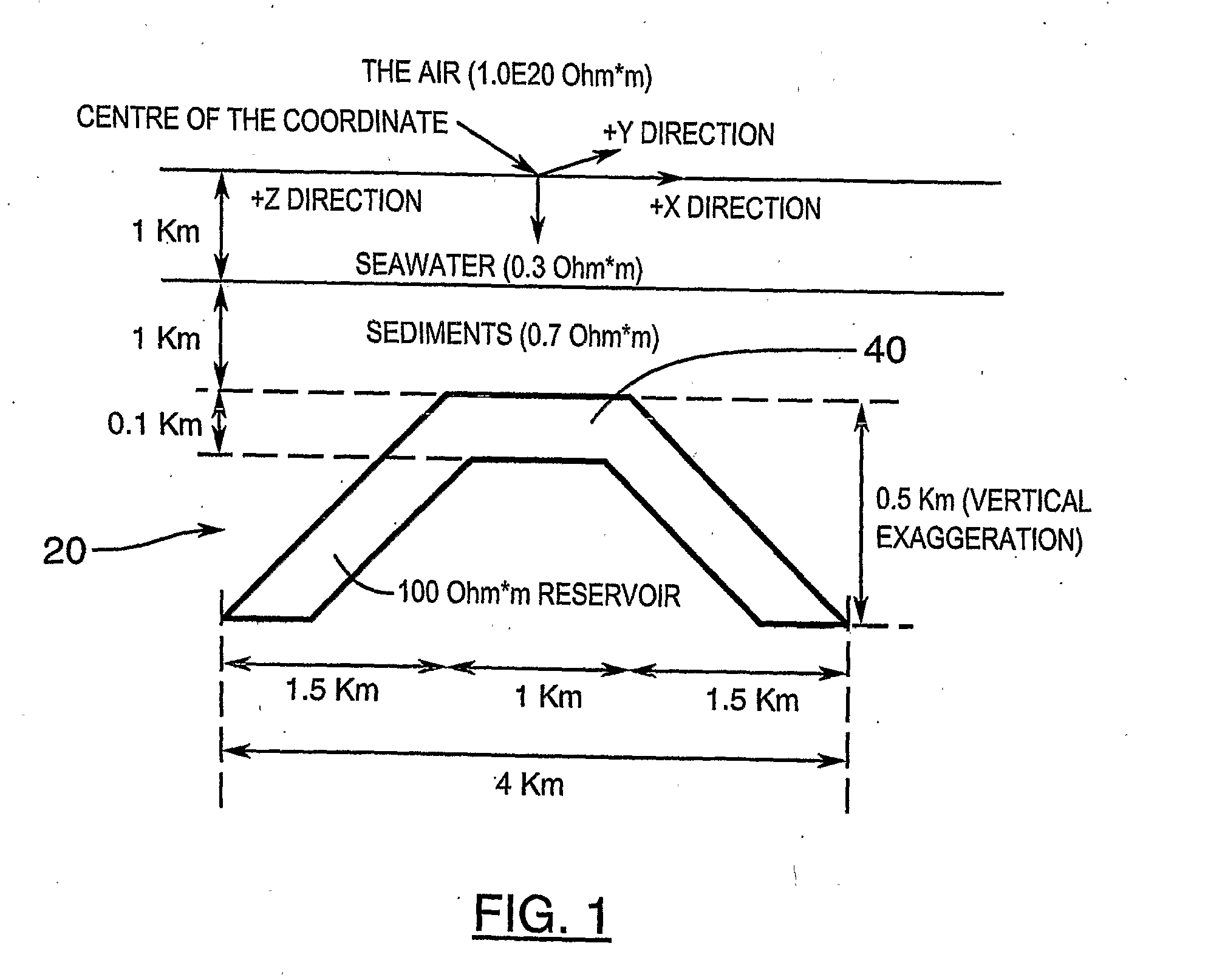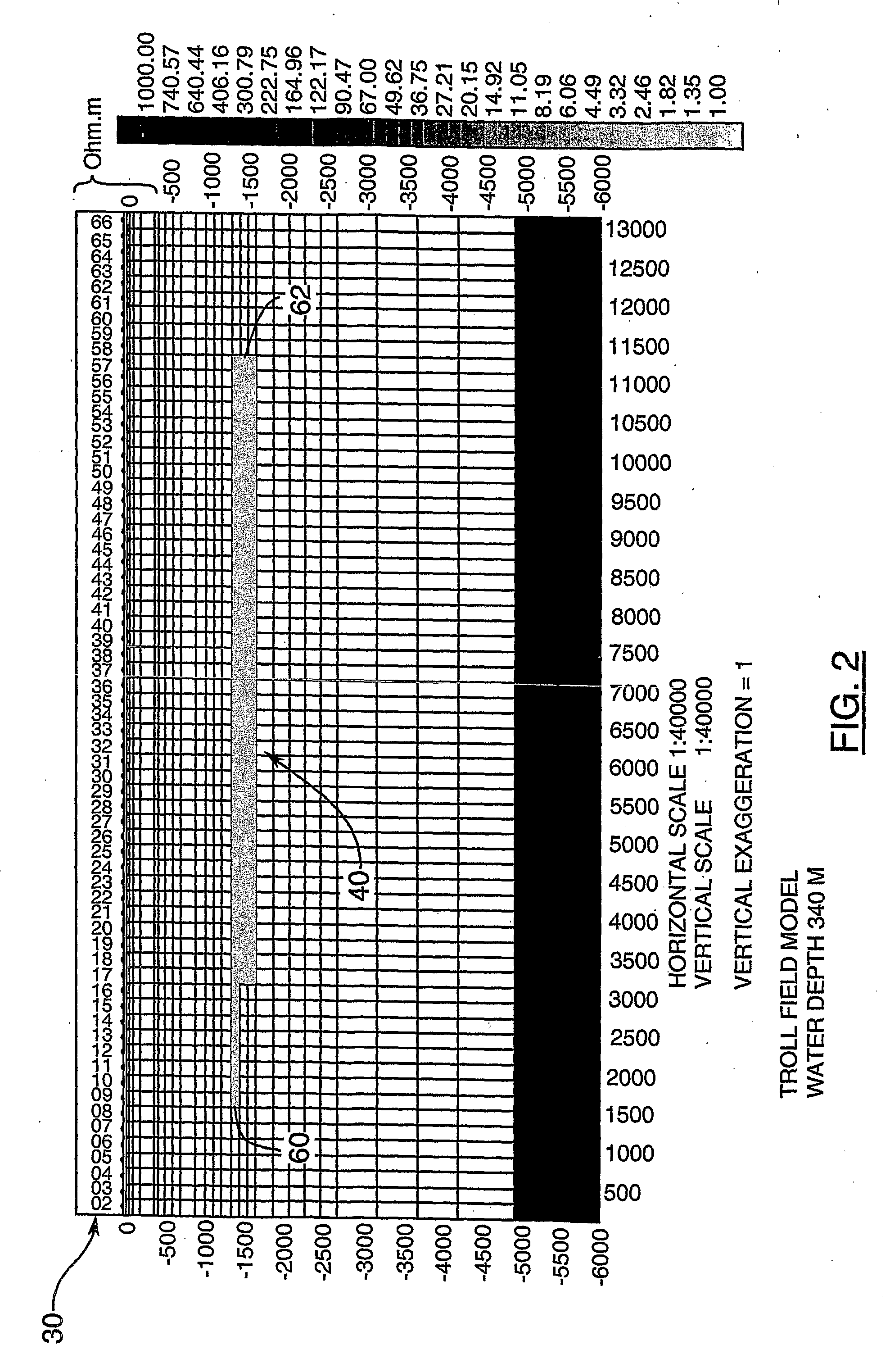Detection of Resistivity of Offshore Seismic Structures Mainly Using Vertical Magnetic Component of Earth's Naturally Varying Electromagnetic Field
a technology of vertical magnetic component and resistivity detection, which is applied in the direction of acoustic wave reradiation, measurement devices, instruments, etc., can solve the problems of not being able to reliably distinguish between oil and water in the trap, requiring large discoveries (hundreds of millions of barrels or more), and high cost of deep water drilling, so as to improve the productivity of the technique and improve the reliability of the relatively small magnitude anomalies , the effect of clear recognition of the anomal
- Summary
- Abstract
- Description
- Claims
- Application Information
AI Technical Summary
Benefits of technology
Problems solved by technology
Method used
Image
Examples
Embodiment Construction
[0061]According to a first preferred embodiment of the invention, the vertical component Hz of the magnetic field arising from the natural source (as opposed to man-made or controlled source) is measured simultaneously at a plurality of points on the sea floor, suitably located with respect to the structure under investigation. It is known from the physics of the problem that, in the absence of noise, the magnitude (i.e. the amplitude without reference to sign) of the vertical component “Hz” of the magnetic field is non-zero only at or near a resistivity boundary 50, as illustrated in FIG. 7 (from McNeill et al., 1991) which shows the variation of |Hz| (vertical axis) across a resistivity boundary 32. Here, “|Hz|” is the mathematical notation denoting the magnitude of the vertical magnetic field Hz. If in FIG. 7 we imagine another such boundary some distance to the left or right, the laterally extended model then approximates that of the spatially finite offshore, hydrocarbon-charge...
PUM
 Login to View More
Login to View More Abstract
Description
Claims
Application Information
 Login to View More
Login to View More - R&D
- Intellectual Property
- Life Sciences
- Materials
- Tech Scout
- Unparalleled Data Quality
- Higher Quality Content
- 60% Fewer Hallucinations
Browse by: Latest US Patents, China's latest patents, Technical Efficacy Thesaurus, Application Domain, Technology Topic, Popular Technical Reports.
© 2025 PatSnap. All rights reserved.Legal|Privacy policy|Modern Slavery Act Transparency Statement|Sitemap|About US| Contact US: help@patsnap.com



